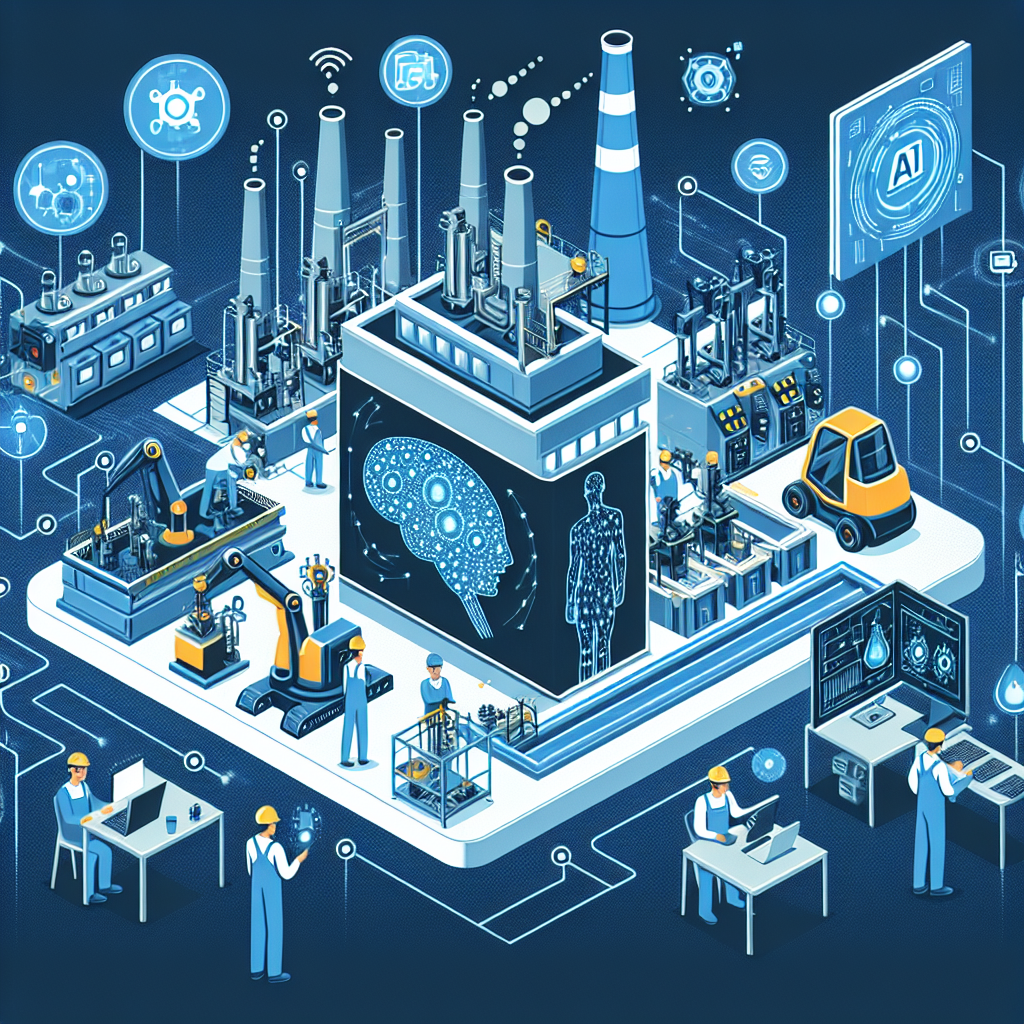In recent years, the manufacturing industry has seen significant advancements in technology, particularly in the areas of artificial intelligence (AI) and digital twins. These technologies have revolutionized the way manufacturers operate, offering new opportunities for improved efficiency, productivity, and decision-making.
AI in Manufacturing:
Artificial intelligence, or AI, refers to the ability of machines to perform tasks that typically require human intelligence, such as learning, reasoning, and problem-solving. In the manufacturing industry, AI is being used in a variety of ways to enhance operations and drive innovation.
One of the key applications of AI in manufacturing is predictive maintenance. By analyzing data from sensors and machines, AI algorithms can predict when equipment is likely to fail, allowing manufacturers to schedule maintenance before a breakdown occurs. This can help reduce downtime, improve productivity, and save costs on repairs.
AI is also being used in quality control processes, where it can analyze images and detect defects in products with greater accuracy and speed than human inspectors. This can help ensure that only high-quality products are shipped to customers, reducing waste and improving customer satisfaction.
In addition, AI is being used to optimize production processes, such as scheduling and inventory management. By analyzing data on production performance and demand forecasts, AI algorithms can help manufacturers make more informed decisions about how to allocate resources and adjust production schedules in real-time.
Digital Twins in Manufacturing:
Digital twins are virtual replicas of physical assets, processes, or systems that can be used to simulate and analyze their behavior in real-time. In manufacturing, digital twins are being used to create virtual models of factories, production lines, and equipment, allowing manufacturers to monitor and optimize their operations more effectively.
One of the key benefits of digital twins in manufacturing is the ability to simulate different scenarios and predict the impact of changes before they are implemented in the physical world. For example, manufacturers can use digital twins to test new production processes, improve efficiency, and optimize resource utilization without disrupting operations.
Digital twins are also being used to facilitate collaboration and communication across different departments within a manufacturing organization. By providing a shared platform for accessing and analyzing data, digital twins can help break down silos and improve decision-making processes.
Furthermore, digital twins can help manufacturers improve product design and development by simulating the performance of prototypes in virtual environments. This can help identify potential issues early in the design process, reducing the time and cost of bringing new products to market.
FAQs:
Q: How does AI improve efficiency in manufacturing?
A: AI can improve efficiency in manufacturing by optimizing production processes, predicting maintenance needs, and enhancing quality control processes. By analyzing data and making real-time decisions, AI algorithms can help manufacturers reduce downtime, minimize waste, and improve overall productivity.
Q: What are the key benefits of using digital twins in manufacturing?
A: The key benefits of using digital twins in manufacturing include the ability to simulate and analyze different scenarios, predict the impact of changes before implementation, improve collaboration and communication, and enhance product design and development processes.
Q: How can manufacturers get started with AI and digital twins?
A: Manufacturers can get started with AI and digital twins by identifying their specific business needs and goals, evaluating available technologies and solutions, and developing a roadmap for implementation. It is important to work with experienced partners and consultants to ensure successful adoption and integration of these technologies.
In conclusion, AI and digital twins are transforming the manufacturing industry by enabling new opportunities for improved efficiency, productivity, and decision-making. By leveraging these technologies, manufacturers can optimize operations, enhance quality control processes, and accelerate innovation to stay competitive in today’s rapidly changing market.

